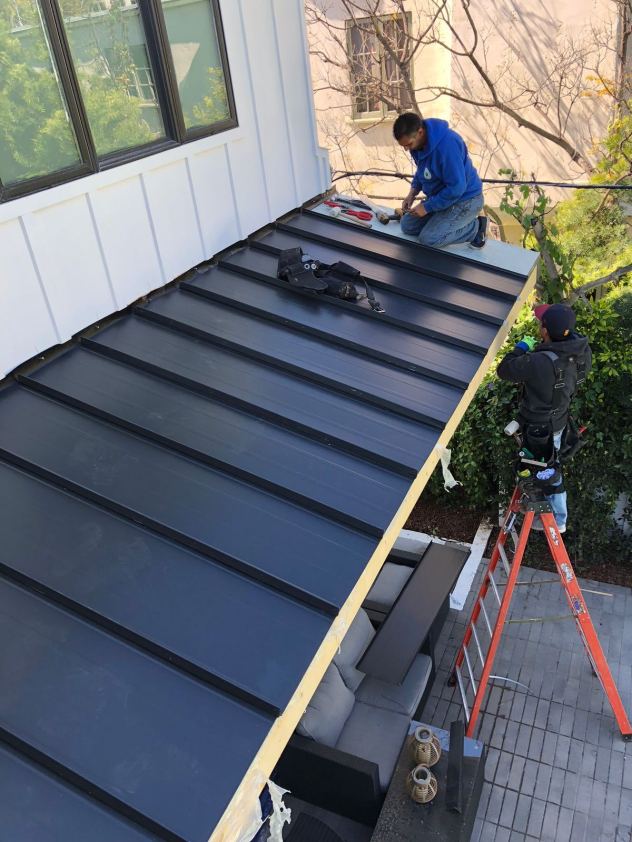
Standing seam metal roofing is a popular choice for homeowners and business owners who want a durable, long-lasting, and attractive roofing solution. However, there are different types of standing seam metal roofing, and it can be difficult to decide which one is right for your needs. In this comprehensive overview, we’ll take a closer look at the different types of standing seam metal roofing, including their benefits, drawbacks, and ideal use cases.
- Snap-Lock Standing Seam Metal Roofing
Snap-lock standing seam metal roofing is a popular choice because it’s easy to install and doesn’t require any special tools or equipment. This type of metal roofing features interlocking panels that snap together, which creates a tight seal that helps to prevent water penetration. The panels are available in a variety of widths, ranging from 12″ to 24″, and are typically made from aluminum or steel.
One of the main benefits of snap-lock standing seam metal roofing is that it’s relatively affordable compared to other types of metal roofing. It’s also lightweight, which makes it easier to install than heavier metal roofing options. However, snap-lock standing seam metal roofing may not be the best choice for areas with high winds or heavy snow loads, as the panels can come loose under extreme weather conditions.
- Mechanical-Lock Standing Seam Metal Roofing
Mechanical-lock standing seam metal roofing is similar to snap-lock standing seam metal roofing, but it uses a mechanical seaming tool to create a stronger and more secure connection between the panels. This type of metal roofing is ideal for areas with high winds or heavy snow loads, as it’s less likely to come loose or leak under extreme weather conditions.
Mechanical-lock standing seam metal roofing is available in a variety of widths, ranging from 12″ to 24″, and is typically made from steel or aluminum. While this type of metal roofing is more expensive than snap-lock standing seam metal roofing, it’s also more durable and long-lasting.
- Batten Seam Standing Seam Metal Roofing
Batten seam standing seam metal roofing is a more traditional type of metal roofing that features wider panels that are secured to the roof deck using metal battens. This type of metal roofing is typically made from steel or aluminum, and the panels are available in a variety of widths, ranging from 12″ to 24″.
Batten seam standing seam metal roofing is ideal for historic or traditional buildings, as it offers a classic look that complements the architectural style of the structure. It’s also a good choice for areas with high winds or heavy snow loads, as the metal battens help to provide additional support and strength to the roof.
However, batten seam standing seam metal roofing is more expensive than other types of standing seam metal roofing, and it requires more labor to install. Additionally, the metal battens can create a thermal bridge that can reduce the energy efficiency of the building.
- Curved Standing Seam Metal Roofing
Curved standing seam metal roofing is a unique type of metal roofing that’s ideal for buildings with curved or rounded rooflines. This type of metal roofing features specially designed panels that are curved to match the shape of the roof, which creates a seamless and attractive appearance.
Curved standing seam metal roofing is typically made from aluminum or steel, and it’s available in a variety of colors and finishes. While it’s more expensive than other types of standing seam metal roofing, it offers a distinctive look that can enhance the architectural style of the building.
Conclusion
Choosing the right type of standing seam metal roofing depends on a variety of factors, including your budget, the climate in your area, and the architectural style of your building. By understanding the benefits and drawbacks of each type of standing seam metal roofing, you can make an informed decision that meets your needs and helps to protect your property for years
